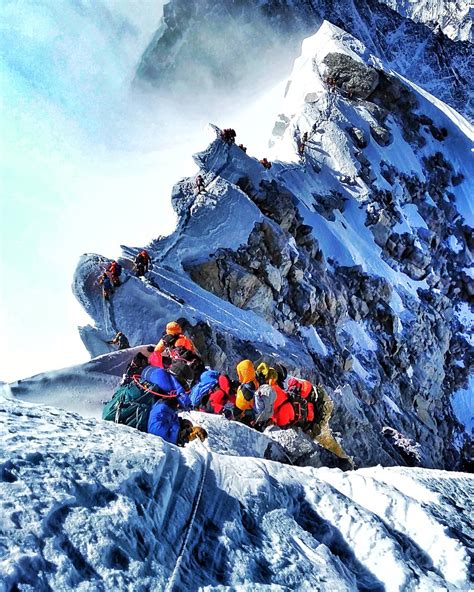Mount Everest, the world’s highest peak, beckons adventurous spirits with its towering silhouette and formidable challenges. Embarking on an Everest expedition requires meticulous planning, including selecting the optimal season for your ascent. Understanding the distinct weather patterns and environmental conditions throughout the year is crucial for ensuring safety, maximizing success, and making the most of your once-in-a-lifetime experience.

Seasonal Climates on Everest
Spring (March-May)
- Mild temperatures: Average temperatures range between -10°C to -20°C (14°F to -4°F), offering favorable conditions for trekking and climbing.
- Stable weather: Spring often brings stable weather with clear skies and light winds, providing ideal visibility for navigation and breathtaking panoramas.
- Increased precipitation: However, late spring can witness increased snowfall and occasional storms, especially at higher elevations.
Summer (June-July)
- Warmest months: Summer temperatures average between -5°C to -15°C (23°F to 5°F), with higher temperatures in lower altitudes.
- Monsoon season: June marks the onset of the monsoon season, bringing unpredictable and often heavy rainfall, which can hamper climbing progress.
- Variable conditions: Weather conditions can be erratic, with alternating clear skies and periods of rain or snowfall.
Autumn (September-October)
- Post-monsoon conditions: This season offers clear skies and generally stable weather post-monsoon, providing optimal climbing conditions.
- Cold temperatures: Temperatures drop significantly, averaging between -15°C to -25°C (5°F to -13°F).
- Increased winds: Autumn brings stronger winds, which can pose challenges on exposed slopes and ridges.
Winter (November-February)
- Extreme cold: Temperatures plummet to extreme lows, ranging from -30°C to -50°C (-22°F to -58°F), making the ascent exceptionally challenging.
- Harsh winds: Severe and sustained winds hinder climbing, creating hazardous conditions and slowing down progress.
- Heavy snowfall: Winter witnesses significant snowfall, which can obscure landmarks and create treacherous avalanche risks.
Optimal Climbing Seasons: Balancing Risks and Rewards
Based on weather patterns, logistical considerations, and safety factors, the following seasons emerge as the best time to climb Everest:
Spring (March-May)
-
Pros:
- Mild temperatures, facilitating acclimatization and climbing efficiency.
- Stable weather, offering clear skies and optimal visibility for navigation and summit attempts.
-
Cons:
- Late spring can bring increased snowfall and storms, affecting visibility and summit chances.
- Crowds on the mountain during peak season can lead to queuing and increased traffic on the route.
Autumn (September-October)
-
Pros:
- Clear skies and post-monsoon conditions, providing excellent visibility and stable weather.
- Temperatures gradually drop, reducing the risk of altitude sickness.
-
Cons:
- Temperatures can be cold, requiring adequate clothing and insulation.
- Winds on Everest can be unpredictable, posing challenges on exposed areas.
- Limited availability of climbing permits during autumn can be competitive.
Common Mistakes to Avoid
To maximize the safety and success of your Everest expedition, avoid the following common mistakes:
- Underestimating the altitude: Everest’s high altitude presents significant challenges to the human body. Acclimatize gradually to avoid altitude sickness.
- Inadequate preparation: Everest is no ordinary climb. Train rigorously, develop technical skills, and gain experience at high altitudes before attempting the summit.
- Ignoring weather forecasts: Stay informed about weather conditions and make informed decisions based on safety considerations. Weather can change rapidly on Everest, so be prepared to adjust your plans accordingly.
- Rushing the ascent: Patience is crucial on Everest. Allow ample time for acclimatization and rest to optimize your chances of success.
- Neglecting safety gear: Everest demands proper equipment, including oxygen, clothing for extreme cold, and safety devices. Skimp on gear at your own peril.
Additional Considerations
In addition to the seasonal factors, several other considerations influence the best time to climb Everest:
- Crowds: Everest is popular, and crowds can be an issue during peak seasons. Consider climbing during quieter times to avoid long lines and delays.
- Permit availability: Permits to climb Everest are limited and highly competitive. Book well in advance to secure your spot.
- Personal preferences: Ultimately, the best time to climb Everest depends on your personal preferences, physical capabilities, and weather tolerance.
Planning Your Ascent: A Memorable Expedition Awaits
Ascending Everest is an unforgettable experience that requires careful planning and preparation. By selecting the optimal season, understanding the environmental conditions, and considering the pros and cons of each season, you can increase your chances of success and enjoy a safe and rewarding journey to the summit of the world.
